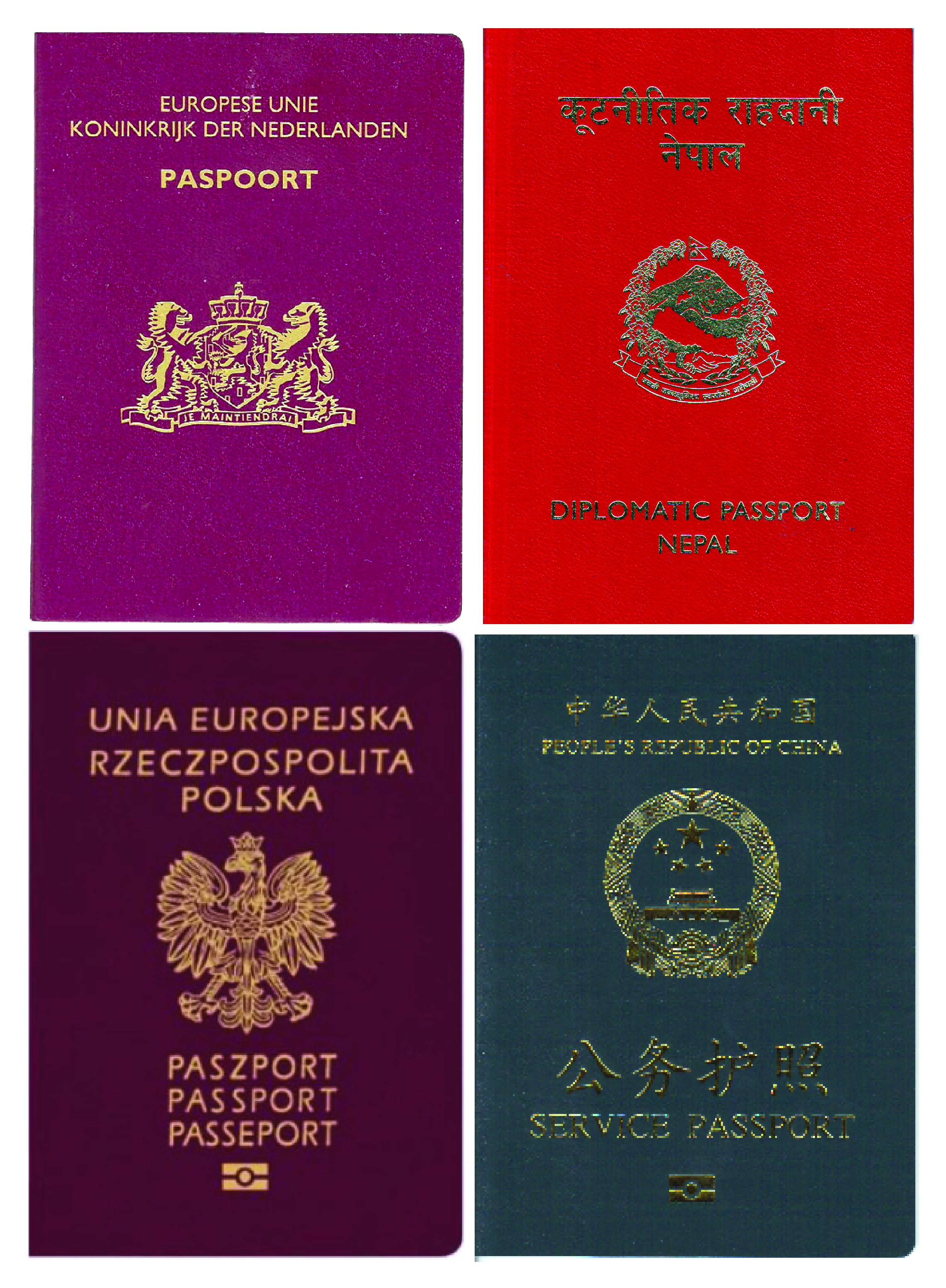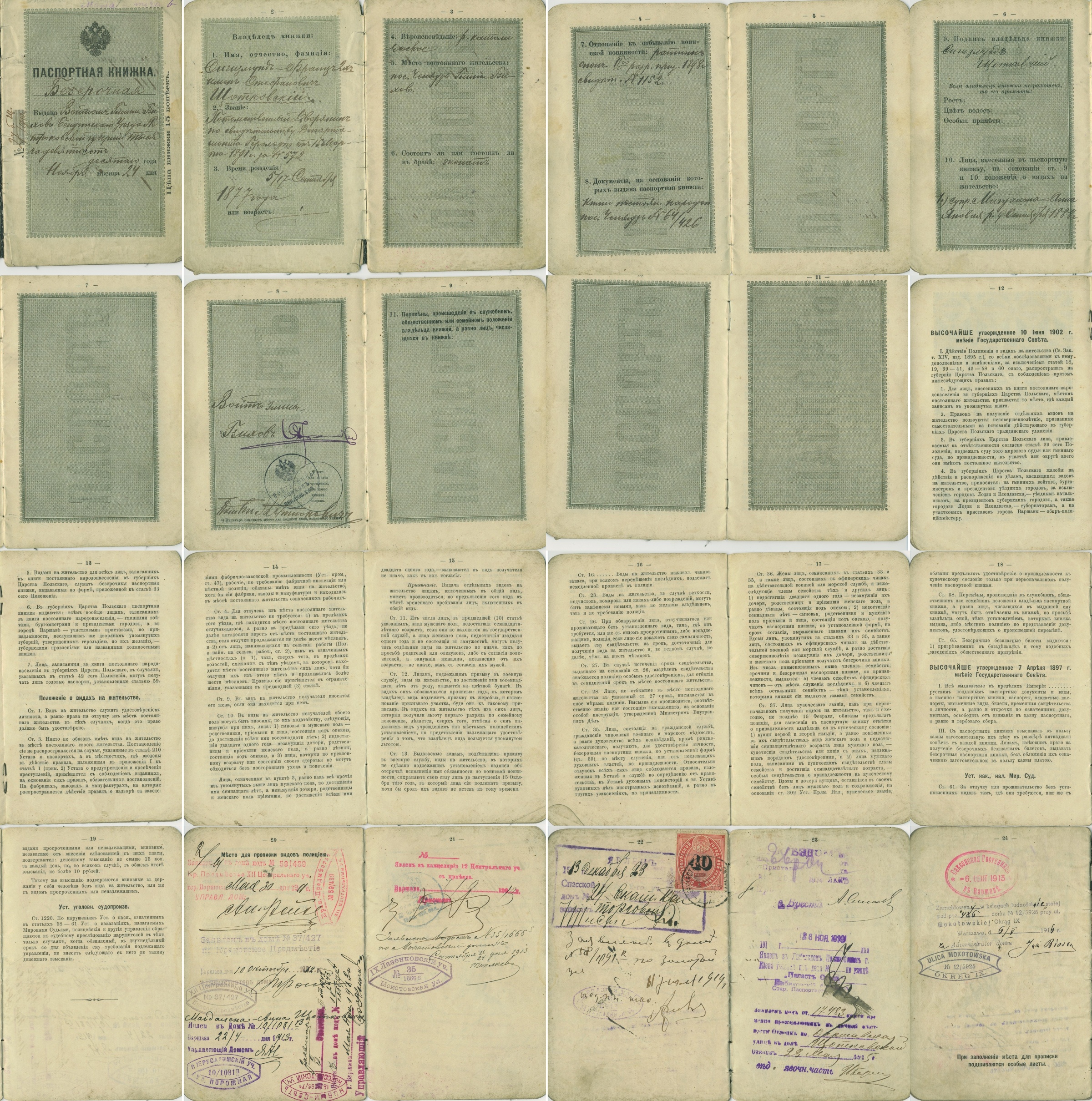|
Internal Passport Of Russia
The Internal Russian passport is a mandatory identity document for all Russian citizens residing in Russia who are aged 14 or over. The Internal Russian passport is an internal passport used for travel and identification purposes in Russia, which is distinct from the International Russian passport used by Russian citizens to travel in and out of Russian borders. After the dissolution of the Soviet Union in 1991, the Soviet Union internal passport continued to be issued until 1997, when a new regulating decree was adopted by the government and when it was replaced by the Russian internal passport. The current Russian internal passports were first issued in 2007. The Russian government is planning to replace the Internal Passport with a biometric, credit card size card. The universal electronic card issued between 2013 and 2016 was planned to replace the Russian Internal passport as the sole national identity document for Russian citizens but was scrapped in early 2017. Histor ... [...More Info...] [...Related Items...] OR: [Wikipedia] [Google] [Baidu] |
Ministry Of Internal Affairs (Russia)
The Ministry of Internal Affairs of the Russian Federation (MVD; , ''Ministerstvo vnutrennikh del'') is the interior ministry of Russia. The MVD is responsible for law enforcement in Russia through its agencies the Police of Russia, Migration Affairs, Drugs Control, Traffic Safety, the Centre for Combating Extremism, and the Investigative Department. The MVD is headquartered in Zhitnaya Street 16 in Yakimanka, Moscow. Vladimir Kolokoltsev has been the Minister of Internal Affairs since 2012. History Russian Empire (1802–1917) The first interior ministry (MVD) in Russia was created by Tsar Alexander I on 28 March 1802. The MVD was one of the most powerful governmental bodies of the Empire, responsible for the police forces and Internal Guards, and the supervision of gubernial administrations. Its initial responsibilities also included prisons, firefighting, state enterprises, the state postal system, state property, construction, roads, medicine, clergy, natural re ... [...More Info...] [...Related Items...] OR: [Wikipedia] [Google] [Baidu] |
Passport System In The Soviet Union
The passport system of the Union of Soviet Socialist Republics was an organisational framework of the single national civil registration system based upon identification documents, and managed in accordance with the laws by ministries and other governmental bodies authorised by the Constitution of the Soviet Union, Constitution of the USSR in the sphere of Ministry of Internal Affairs, internal affairs. 1917–1932 The foundations of the passport system of the Russian Empire, inherited by the Russian Provisional Government, Russian Republic in March 1917 for eight months, were thrown into confusion by the October Revolution, which dismantled all the state apparatus, including the police as one of the key elements of this system. An official passport system did not exist in the early RSFSR nor in the USSR (established 29 December 1922). Pre-revolutionary passports continued to be used as identification, but large sections of the adult population had no passports at all: many peasant ... [...More Info...] [...Related Items...] OR: [Wikipedia] [Google] [Baidu] |
Patronymic
A patronymic, or patronym, is a component of a personal name based on the given name of one's father, grandfather (more specifically an avonymic), or an earlier male ancestor. It is the male equivalent of a matronymic. Patronymics are used, by custom or official policy, in many countries worldwide, although elsewhere their use has been replaced by or transformed into patronymic surnames. Examples of such transformations include common English surnames such as Johnson (surname), Johnson (son of John). Origins of terms The usual noun and adjective in English is ''patronymic'', but as a noun this exists in free variation alongside ''patronym''. The first part of the word ''patronym'' comes from Greek language, Greek πατήρ ''patēr'' 'father' (Genitive case, GEN πατρός ''patros'' whence the combining form πατρο- ''patro''-); the second part comes from Greek ὄνυμα ''onyma'', a variant form of ὄνομα ''onoma'' 'name'. In the form ''patronymic'', this stand ... [...More Info...] [...Related Items...] OR: [Wikipedia] [Google] [Baidu] |
Pasport RF
A passport is an official travel document issued by a government that certifies a person's identity and nationality for international travel. A passport allows its bearer to enter and temporarily reside in a foreign country, access local aid and protection, and obtain consular assistance from their government. In addition to facilitating travel, passports are a key mechanism for border security and regulating migration; they may also serve as official identification for various domestic purposes. State-issued travel documents have existed in some form since antiquity; the modern passport was universally adopted and standardized in 1920. The passport takes the form of a booklet bearing the official name and emblem of the issuing government and containing the biographical information of the individual, including their full name, photograph, place and date of birth, and signature. A passport does not create any rights in the country being visited nor impose any obligation on th ... [...More Info...] [...Related Items...] OR: [Wikipedia] [Google] [Baidu] |
List Of Diplomatic Missions Of Russia
This is a list of diplomatic missions of Russia. These missions are subordinate to the Ministry of Foreign Affairs (Russia), Russian Ministry of Foreign Affairs. The Russia, Russian Federation has one of the largest networks of embassies and consulates of any country. Russia has significant interests in Eastern Europe, the Near East and especially in the former states of the Soviet Union. It also has extensive ties to countries in the developing world, a legacy of Cold War diplomatic efforts to extend the Soviet Union's influence in Africa and Asia which are now more important for commercial reasons. Russia established several consulates in the United States and Canada to cater to Russian immigrants. In 1917, the Tsarist government vanished, with a number of consuls who maintained tsarist loyalties establishing the "Council of Ambassadors" (), through which they worked as Embassy without a government, embassies without a government. Among these were consuls in seven U.S. cities ... [...More Info...] [...Related Items...] OR: [Wikipedia] [Google] [Baidu] |
Resident Registration In Russia
Registration in the Russian Federation is the system that records the residence and internal migration of Russian citizens. The present system was introduced on October 1, 1993, and replaced the prior repressive mandatory Soviet system of '' propiska''. The word "propiska" is still widely used colloquially to refer to the registration program. 300px, Registration certificate According to a Russian Constitutional Court decision, registration or absence of registration cannot affect any rights of a citizen. Citizens exercise registration and deregistration on a voluntary basis. Under the current registration program, Russian citizens must register if they live in the same place for 90 days (for Belarusian citizens in Russia and vice versa, registration is required after 30 days). There are two types of registration: * ''Registration of citizens at the place of residence'' (so called "permanent registration" or sometimes "permanent propiska" / "propiska") * ''Registration of ... [...More Info...] [...Related Items...] OR: [Wikipedia] [Google] [Baidu] |
Constitution Of Russia
The Constitution of the Russian Federation () was adopted by national referendum on 12 December 1993 and enacted on 25 December 1993. The latest significant reform occurred in 2020, marked by extensive amendments that altered various sections, including presidential terms, social policies, and the role of Russian law over international ones. (See 2020 amendments to the Constitution of Russia). Russia's constitution came into force on 25 December 1993, at the moment of its official publication, and abolished the Soviet system of government. The 1993 Constitution is one of the longest-standing constitutions in Russian history, second only to the Soviet Union’s 1936 Constitution, which was in effect until 1977. The text was drafted by the 1993 Constitutional Conference, which was attended by over 800 participants. Sergei Alexeyev, Sergey Shakhray, and sometimes Anatoly Sobchak are considered as the primary co-authors of the constitution. The text was inspired by Mikhail ... [...More Info...] [...Related Items...] OR: [Wikipedia] [Google] [Baidu] |
Propiska In The Soviet Union
A propiska ( rus, пропи́ска, p=prɐˈpʲiskə, a=Ru-прописка.ogg, plural: ''propiski'') was both a written residency permit and a internal migration, migration-recording tool, used in the Russian Empire before 1917 and in the Soviet Union from 1932 until 1991. The USSR had both permanent ( or ) and temporary () propiskas. In the transition period to a market economy in the aftermath of the collapse of the Soviet Union in late 1991, the ''permanent propiska'' in municipal apartments was a factor that allowed dwellers to obtain Private property rights, private-property rights on the living space they were "inscripted" in during Privatization in Russia, privatization (those who built housing at their own expense obtained a ''permanent propiska'' there by definition). Etymology Originally, the noun ''propiska'' meant the clerical procedure of ''registration'', of enrolling the person (writing his or her name) into the police records of the local population (or wri ... [...More Info...] [...Related Items...] OR: [Wikipedia] [Google] [Baidu] |
Russian Language
Russian is an East Slavic languages, East Slavic language belonging to the Balto-Slavic languages, Balto-Slavic branch of the Indo-European languages, Indo-European language family. It is one of the four extant East Slavic languages, and is the native language of the Russians. It was the ''de facto'' and ''de jure'' De facto#National languages, official language of the former Soviet Union.1977 Soviet Constitution, Constitution and Fundamental Law of the Union of Soviet Socialist Republics, 1977: Section II, Chapter 6, Article 36 Russian has remained an official language of the Russia, Russian Federation, Belarus, Kazakhstan, Kyrgyzstan, and Tajikistan, and is still commonly used as a lingua franca in Ukraine, Moldova, the Caucasus, Central Asia, and to a lesser extent in the Baltic states and Russian language in Israel, Israel. Russian has over 253 million total speakers worldwide. It is the List of languages by number of speakers in Europe, most spoken native language in Eur ... [...More Info...] [...Related Items...] OR: [Wikipedia] [Google] [Baidu] |
Verst
A verst (; ) is an obsolete Russian unit of length, defined as 500 sazhen. This makes a verst equal to . Plurals and variants In the English language, ''verst'' is singular with the normal plural ''versts''. In Russian, the nominative singular is , but the form usually used with numbers is the genitive plural —10 verst, 25 verst, etc.—whence the English form. A (, literally "border verst") is twice as long as a verst. The verst of the 17th century was 700 sazhens or 1.49 km as against the 500 sazhens or 1.067 km it became at the time of Peter the Great. Finnish ''virsta'' In Finland, a was 1,068.84 m according to the Swedish standard, defined in 1827 as of a , the Finnish language name for the pre-metric Swedish '' mil'', used in Finland since the early 17th century (see Obsolete Finnish units of measurement), or 600 (Swedish fathoms, 1.781 m). Metrication replaced with the kilometre The kilometre (SI symbol: km; or ), spelt kilometer in American E ... [...More Info...] [...Related Items...] OR: [Wikipedia] [Google] [Baidu] |
Russian Empire
The Russian Empire was an empire that spanned most of northern Eurasia from its establishment in November 1721 until the proclamation of the Russian Republic in September 1917. At its height in the late 19th century, it covered about , roughly one-sixth of the world's landmass, making it the list of largest empires, third-largest empire in history, behind only the British Empire, British and Mongol Empire, Mongol empires. It also Russian colonization of North America, colonized Alaska between 1799 and 1867. The empire's 1897 census, the only one it conducted, found a population of 125.6 million with considerable ethnic, linguistic, religious, and socioeconomic diversity. From the 10th to 17th centuries, the Russians had been ruled by a noble class known as the boyars, above whom was the tsar, an absolute monarch. The groundwork of the Russian Empire was laid by Ivan III (), who greatly expanded his domain, established a centralized Russian national state, and secured inde ... [...More Info...] [...Related Items...] OR: [Wikipedia] [Google] [Baidu] |




